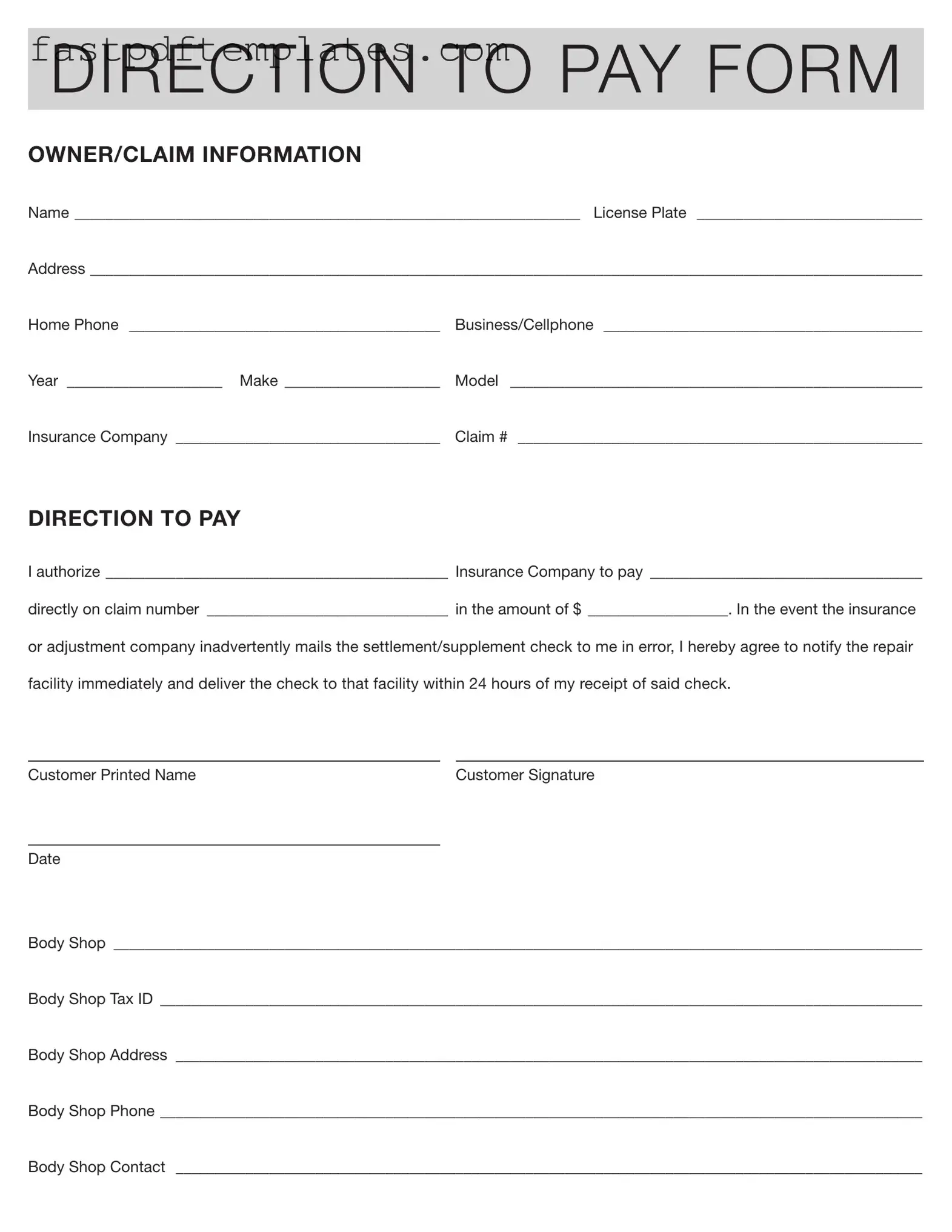The Power of Attorney document is similar to the Authorization and Direction Pay form in that it allows one party to act on behalf of another. In both cases, the individual granting authority must clearly specify the powers being delegated. The Power of Attorney can cover a wide range of legal and financial decisions, while the Authorization and Direction Pay form specifically pertains to the payment of insurance claims. Both documents require signatures to validate the authority being granted, ensuring that the designated party can proceed with the intended actions.
The Assignment of Benefits form also shares similarities with the Authorization and Direction Pay form. This document enables a policyholder to transfer their insurance benefits to a third party, typically a service provider. Like the Authorization and Direction Pay form, it must include specific details about the claim and the parties involved. Both documents aim to streamline the payment process by allowing the insurance company to pay the service provider directly rather than the policyholder.
The Release of Liability form is another document that bears resemblance to the Authorization and Direction Pay form. While the primary purpose of a Release of Liability is to protect one party from legal claims, it can also be used in conjunction with payment authorizations. Both documents require the consent of the individual involved, ensuring that they understand and agree to the terms before any payments or actions are taken. This helps to mitigate disputes regarding payment and liability in the event of a claim.
The Claim Authorization form is closely related to the Authorization and Direction Pay form. It grants permission for an insurance company to process a claim on behalf of the policyholder. Both forms require specific information about the claim, including the parties involved and the amounts to be paid. The Claim Authorization form focuses on the approval of the claim itself, while the Authorization and Direction Pay form emphasizes the payment aspect, allowing for direct payments to service providers.
The Consent to Release Information form is another document that aligns with the Authorization and Direction Pay form. This form allows a policyholder to authorize the sharing of their personal and claim-related information with third parties, such as repair facilities or insurance adjusters. Both documents require explicit consent from the individual, ensuring that their information is handled appropriately. The Consent to Release Information form supports the payment process by facilitating communication between the involved parties.
Finally, the Insurance Claim Form serves a similar purpose to the Authorization and Direction Pay form. While the Insurance Claim Form initiates the claims process by providing the necessary details about the incident and damages, the Authorization and Direction Pay form follows up by directing how payments should be made. Both forms require accurate information and signatures to ensure that the claims process runs smoothly and that payments are handled correctly.

